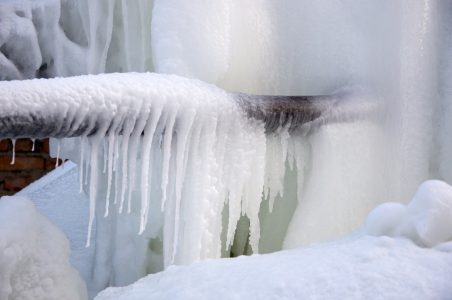Crucial Advice to Avoid Frozen Pipes in Cold Weather
Crucial Advice to Avoid Frozen Pipes in Cold Weather
Blog Article
How do you actually feel in relation to Winter Plumbing Precautions: Preventing Frozen Pipes?

Cold weather can ruin your plumbing, especially by freezing pipelines. Below's just how to avoid it from happening and what to do if it does.
Intro
As temperatures decline, the threat of icy pipelines increases, possibly bring about costly repair work and water damages. Understanding how to stop frozen pipelines is critical for homeowners in cold climates.
Prevention Tips
Insulating prone pipes
Cover pipes in insulation sleeves or make use of warm tape to secure them from freezing temperature levels. Concentrate on pipes in unheated or exterior locations of the home.
Heating strategies
Keep indoor spaces properly heated, specifically locations with plumbing. Open up closet doors to allow warm air to distribute around pipelines under sinks.
Just how to recognize frozen pipes
Try to find lowered water flow from taps, uncommon smells or sounds from pipelines, and visible frost on subjected pipes.
Long-Term Solutions
Architectural modifications
Think about rerouting pipes away from outside wall surfaces or unheated areas. Add added insulation to attics, basements, and crawl spaces.
Updating insulation
Buy top quality insulation for pipelines, attics, and wall surfaces. Appropriate insulation aids maintain constant temperature levels and lowers the risk of frozen pipelines.
Protecting Outside Plumbing
Yard hose pipes and outdoor faucets
Separate and drain pipes yard hose pipes prior to winter. Set up frost-proof faucets or cover exterior faucets with shielded caps.
Recognizing Icy Pipelines
What triggers pipes to freeze?
Pipelines freeze when revealed to temperatures listed below 32 ° F (0 ° C) for prolonged periods. As water inside the pipes ices up, it increases, putting pressure on the pipe wall surfaces and potentially creating them to rupture.
Risks and problems
Frozen pipes can lead to supply of water disturbances, residential or commercial property damages, and costly repair services. Ruptured pipelines can flooding homes and create considerable structural damage.
Indicators of Frozen Water Lines
Identifying icy pipelines early can avoid them from bursting.
What to Do If Your Pipelines Freeze
Immediate actions to take
If you believe frozen pipelines, keep taps available to alleviate stress as the ice melts. Make use of a hairdryer or towels soaked in warm water to thaw pipelines gradually.
Verdict
Preventing frozen pipelines needs aggressive steps and fast actions. By comprehending the causes, indications, and safety nets, property owners can shield their plumbing during cold weather.
5 Ways to Prevent Frozen Pipes
Drain Outdoor Faucets and Disconnect Hoses
First, close the shut-off valve that controls the flow of water in the pipe to your outdoor faucet. Then, head outside to disconnect and drain your hose and open the outdoor faucet to allow the water to completely drain out of the line. Turn off the faucet when done. Finally, head back to the shut-off valve and drain the remaining water inside the pipe into a bucket or container. Additionally, if you have a home irrigation system, you should consider hiring an expert to clear the system of water each year.
Insulate Pipes
One of the best and most cost-effective methods for preventing frozen water pipes is to wrap your pipes with insulation. This is especially important for areas in your home that aren’t exposed to heat, such as an attic. We suggest using foam sleeves, which can typically be found at your local hardware store.
Keep Heat Running at 65
Your pipes are located inside your walls, and the temperature there is much colder than the rest of the house. To prevent your pipes from freezing, The Insurance Information Institute suggests that you keep your home heated to at least 65 degrees, even when traveling. You may want to invest in smart devices that can keep an eye on the temperature in your home while you’re away.
Leave Water Dripping
Moving water — even a small trickle — can prevent ice from forming inside your pipes. When freezing temps are imminent, start a drip of water from all faucets that serve exposed pipes. Leaving a few faucets running will also help relieve pressure inside the pipes and help prevent a rupture if the water inside freezes.
Open Cupboard Doors
Warm your kitchen and bathroom pipes by opening cupboards and vanities. You should also leave your interior doors ajar to help warm air circulate evenly throughout your home.

Do you like more info about Prevent Frozen Pipes ? Place a comment down below. We'd be pleased to see your reactions about this posting. We hope that you visit us again later on. So long as you appreciated our blog posting please make sure you remember to pass it around. I am grateful for being here. Please come by our website back soon.
Book Service Now Report this page